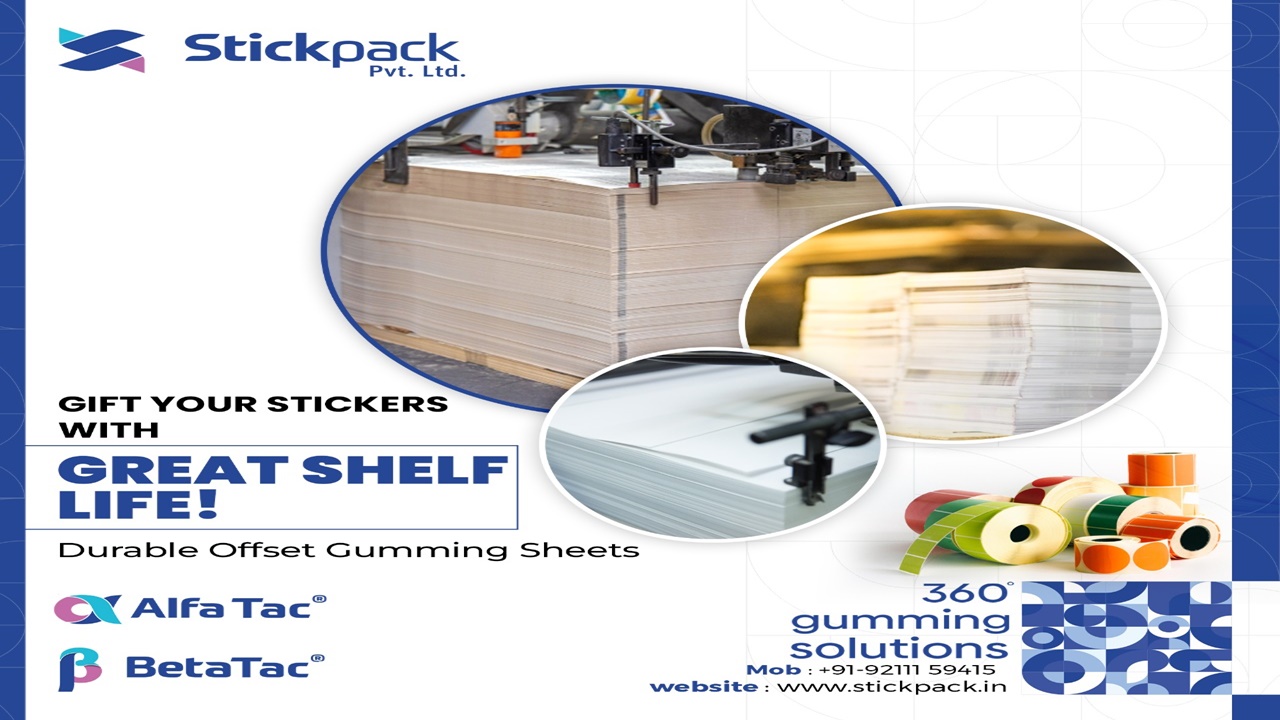Pre-Gumming Sheets, also known as self-adhesive sheets, are a convenient and efficient way to add a gummed surface to your paper products. They can be used for a variety of applications, such as envelopes, labels, and bookbinding.
Pre gumming Sheets comes are of different types such as:
1.Paper release liners
2.Film release liners
3.Silicone release liners
Pre Gumming Sheets are used in different industries such as packaging industry, labelling industry and tape manufacturing industry.
Here are some tips and tricks for using pre-gumming by sheets:
1.Choose the right pre-gumming sheet:
Pre-gumming sheets come in different sizes and adhesive strengths, so it’s important to choose the right one for your project.
For example, if you’re using the sheets for envelope sealing, you’ll want a sheet with a strong adhesive.
2.Store pre-gumming sheets properly:
Pre-gumming sheets should be stored in a cool, dry place, away from direct sunlight and heat sources. This will help to preserve the adhesive and prevent it from drying out.
3.Use a clean surface:
When applying pre-gumming sheets, make sure the surface is clean and free of any dust. This will help ensure a strong bond between the pre-gummed sheet and the surface.
4.Apply pressure:
After applying the pre-gumming sheet, apply pressure to the surface to ensure a strong bond. This can be done with a roller or your hand.
5.Cut to size:
Pre-gumming sheets can be easily cut to size using scissors or a paper cutter. This will save you time and ensure a precise fit for your project.
6.Test the adhesive strength:
Before using pre-gumming sheets for a large project, it’s a good idea to test the adhesive strength by applying the sheet to a small surface and checking the bond after a few hours.
7.Use a Release Paper:
When applying pre-gumming sheets, it is a good idea to use Release Paper, which is a protective paper that prevents the adhesive from sticking to the wrong surface. This will make application of pre-gumming sheets easier.
8.Be mindful of the environment:
Pre-gumming sheets can be more environmentally friendly than traditional gumming methods, as they require less water and energy to produce.
By following these tips and tricks, you can ensure that your pre-gumming sheets are used effectively and efficiently. With the right technique, pre-gumming sheets can save you time, money, and hassle while providing a strong and reliable bond for your paper products.
Moreover, you can get a wide range of premium packaging and labelling materials from Stickpack, which is not only one of the best Offset gumming sheets Wholesaler but also a leading Pre- Gumming Sheet Manufacturer in Haryana, India.

